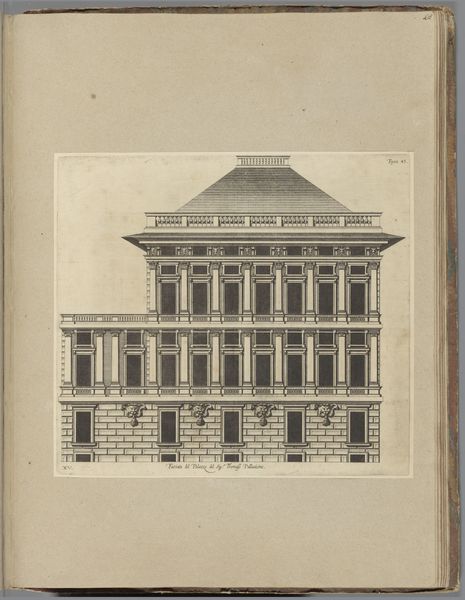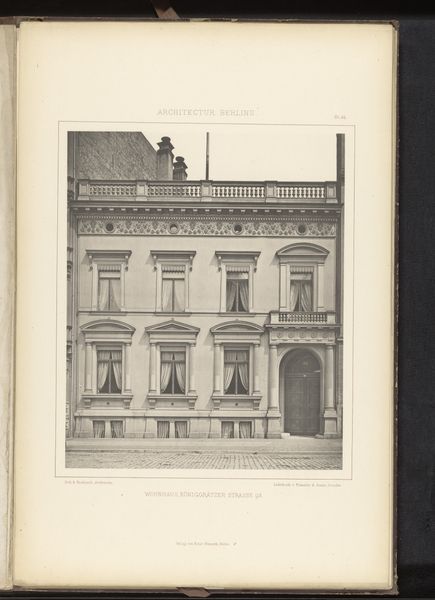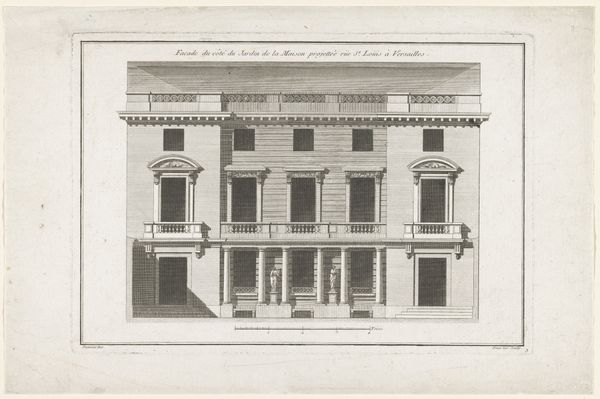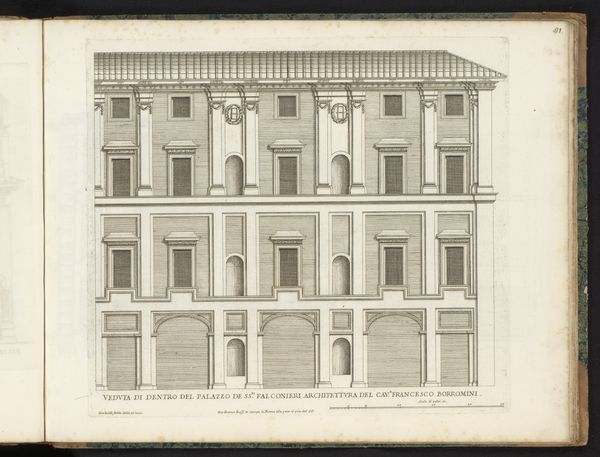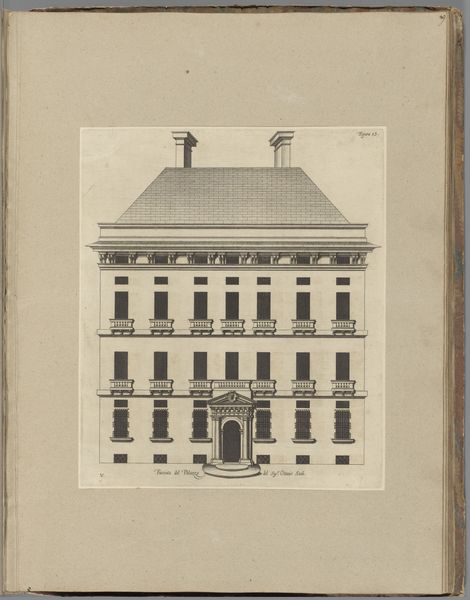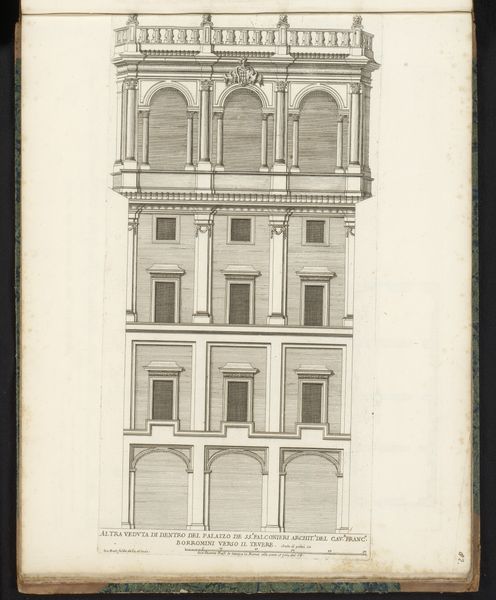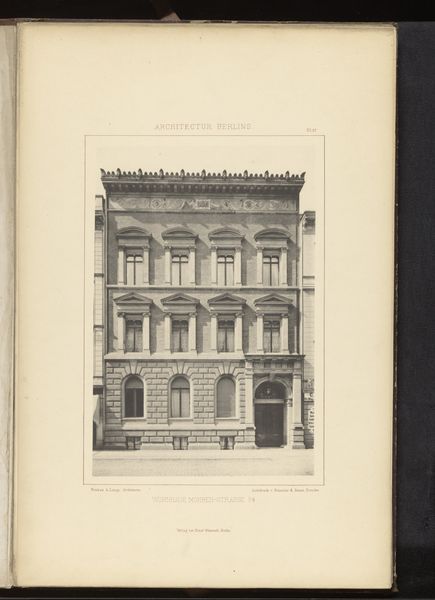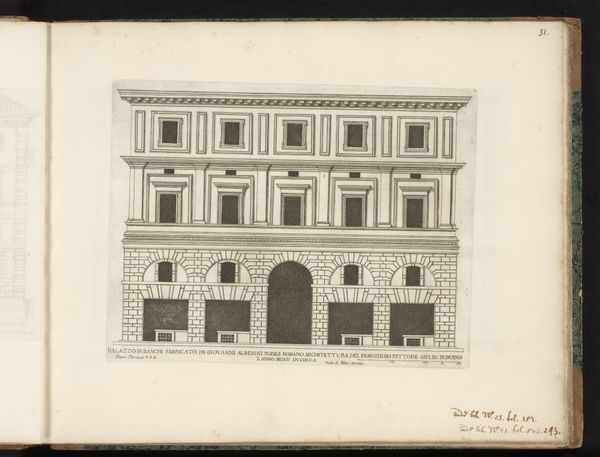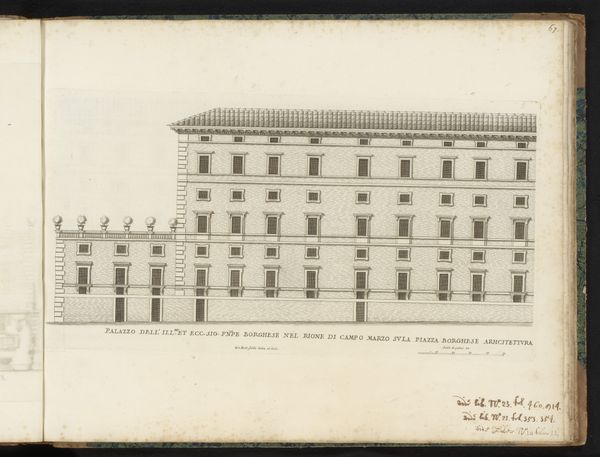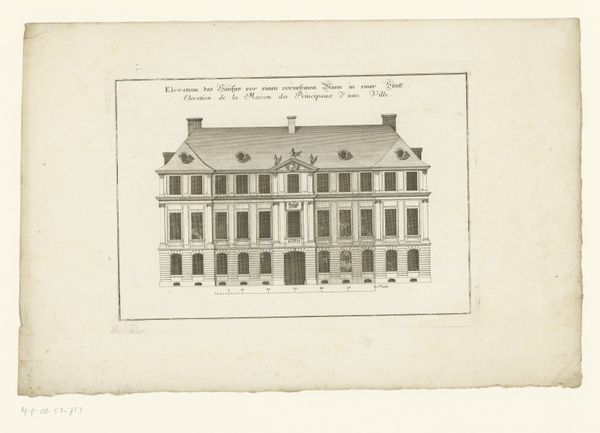
Opstand van de façade van het Palazzo Pallavicini-Cambiaso te Genua 1622
0:00
0:00
drawing, paper, ink, architecture
#
drawing
#
paper
#
form
#
11_renaissance
#
ink
#
line
#
cityscape
#
architecture
#
building
Dimensions: height 285 mm, width 359 mm, height 583 mm, width 435 mm
Copyright: Rijks Museum: Open Domain
Nicolaes Ryckmans created this drawing of the Palazzo Pallavicini-Cambiaso façade in Genoa, sometime in the 17th century. Although the exact date is unknown, this image reflects the 17th-century Dutch interest in Italian architecture. During this time, architectural drawings served multiple purposes. They acted as records of existing structures, proposals for new designs, and, more broadly, as symbols of cultural and political aspirations. Ryckmans' work exemplifies how architectural drawings circulated ideas about design and status, and such circulation would eventually influence urban development across Europe. Genoa, known for its opulent palaces, became a focal point for architects and artists who sought inspiration from its innovative designs. To truly understand this drawing, we need to delve into its broader context. By studying travel accounts, architectural treatises, and the history of urban planning, we can uncover the complex interplay of commerce, culture, and power that shaped both Genoa and Dutch art.
Comments
No comments
Be the first to comment and join the conversation on the ultimate creative platform.
